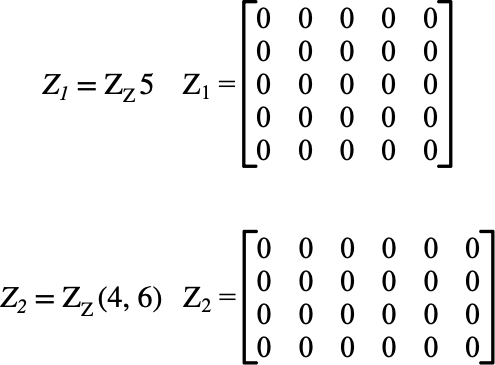\(\text{Z}_\text{Z}\)¶
You can use the \(\text{Z}_\text{Z}\) function to generate an integer zero matrix.
You can use the \zint backslash command to insert this function.
The following variants of this function are available:
\(\text{integer matrix } \text{Z}_\text{Z} \left ( \text{<side>} \right )\)
\(\text{integer matrix } \text{Z}_\text{Z} \left ( \text{<rows>}, \text{<columns>} \right )\)
The single parameter version returns a square matrix. The \(\text{<side>}\) parameter indicates the number of rows and columns.
The two parameter version returns a matrix of arbitrary size. The \(\text{<rows>}\) and \(\text{<columns>}\) values specify the size of the generated matrix.
The function returns a integer matrix holding 0’s.
Figure 226 shows the basic use of the \(\text{Z}_\text{Z}\) function.

Figure 226 Example Use Of the ZZ Function¶
